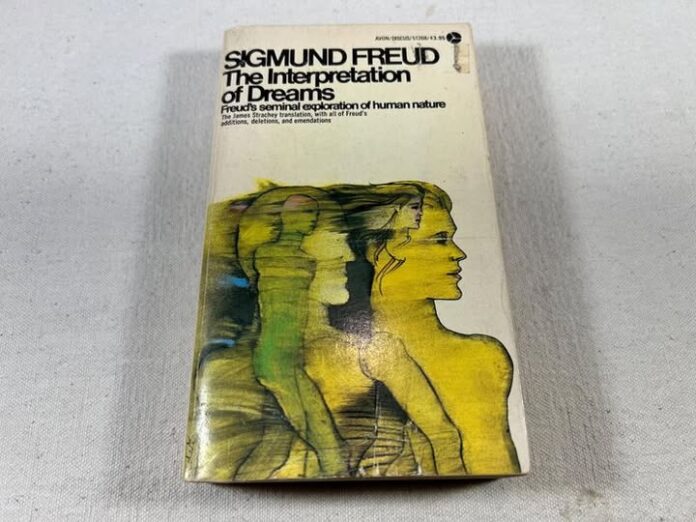In the twilight of the 19th century, Sigmund Freud unveiled a work that would forever alter the landscape of human understanding: The Interpretation of Dreams (Die Traumdeutung), published in 1899 and dated 1900. This masterpiece, a shimmering tapestry of theory and introspection, is not merely a book—it’s a portal into the shadowed depths of the mind, where desires whisper, fears take shape, and the unconscious unfurls its enigmatic language. Freud, the father of psychoanalysis, invites us to peer through the veil of sleep, declaring dreams “the royal road to the unconscious,” a pathway to the hidden truths that govern our waking lives.
At the heart of Freud’s vision lies a radical idea: dreams are not chaotic fragments of the night, but profound expressions of our deepest wishes, often those too forbidden to surface in daylight. Through a meticulous dance of analysis, he divides dreams into the manifest content—the vivid, often bizarre stories we recall—and the latent content, the buried desires and conflicts they conceal. This transformation, he explains, is the work of the “dream-work,” a process where the mind cloaks its secrets in symbols, condenses sprawling emotions into single images, and displaces feelings onto unexpected objects, all to protect us from the raw intensity of our own truths.
Freud’s journey through the dreamscape is both scholarly and deeply personal. He draws from his own dreams—like the haunting “Irma’s Injection,” where a patient’s suffering reveals his own guilt and professional fears—offering a raw, vulnerable glimpse into his psyche. Across seven chapters, he weaves together case studies, literary references, and philosophical musings, dismantling the notion that dreams are meaningless. Instead, he reveals them as a stage where the unconscious plays out its dramas, often rooted in childhood experiences and primal urges, such as the Oedipus complex—a child’s unspoken longing for one parent and rivalry with the other.
The book glimmers with Freud’s exploration of dream symbolism, where a tower might whisper of ambition, a snake slither with forbidden desire, or a falling tooth hint at deeper anxieties. Yet he warns against rigid interpretations, insisting that a dream’s meaning blooms from the dreamer’s own life—its symbols as unique as fingerprints. Dreams, he shows, also weave in “day residues,” fragments of our daily lives that become threads in a larger tapestry of wish fulfillment, turning a fleeting argument into a grand betrayal or a mundane moment into a soaring flight of freedom.
What makes The Interpretation of Dreams so exquisite is Freud’s fearless plunge into the human condition. He confronts the tension between our civilized selves and the wild, untamed impulses beneath, showing how dreams become a safe harbor for desires we dare not name—sexual yearnings, aggressive impulses, or the ache for lost innocence. His prose, dense with insight and laced with references to mythology and literature, feels like a conversation with a brilliant, restless mind, one unafraid to challenge the scientific norms of his time.
Though modern science may question Freud’s emphasis on sexual symbolism or his subjective methods, his legacy endures. The Interpretation of Dreams birthed psychoanalysis, inspiring generations of thinkers, artists, and dreamers—from the surrealist paintings of Salvador Dalí to the introspective narratives of modern cinema. For Freud, this was his most cherished work, written during a period of personal turmoil after his father’s death, a time when his own dreams became a canvas for grappling with grief and self-discovery.
This book is a luminous invitation to explore the mysteries of the mind, to listen to the whispers of the night and uncover the truths they hold. The Interpretation of Dreams is not just a study—it’s a poetic odyssey into the soul, a reminder that even in sleep, we are endlessly, beautifully human, our dreams a mirror to the desires and fears that shape us. For anyone ready to embark on this journey, Freud’s work remains a timeless, captivating guide to the wonders of the unconscious.


